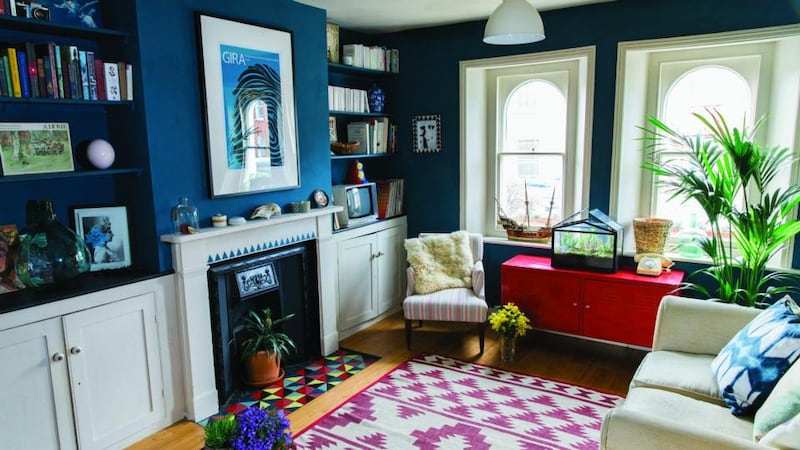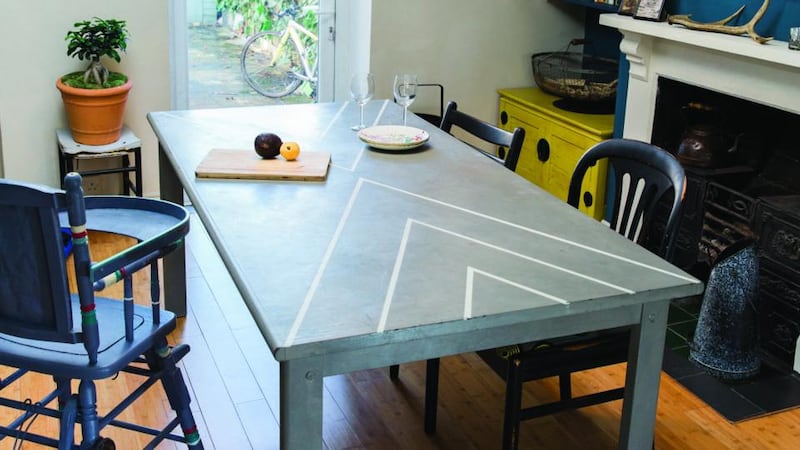Annie Sloan is considered the queen of paint. Her chalk paint brand was established 24 years ago, but it took the banking crisis of 2010 for it to become a global phenomenon.
Annie Sloan is an accidental entrepreneur. A lover of paint, she spent seven years at art school, first at Croydon Art School and then doing a postgraduate at Reading University, studying fine art and painting to “learn about colour”.
She grew up with the modern colour field painters, de Koonig and Rothko, neo-dadists Robert Rauschenberg and Jasper Johns and loved Picasso, but it was the prints her Scottish father hung in their home that really influenced her. "He loved colour and had a lot of Gauguin and Bruegel, a Flemish family of artists."


At college she became interested in historic painted furniture, in particular Irish, Swedish, Danish and Scottish examples, and the history of pigments. "This work was done by farmers who made their own paint. In Sweden they used egg yolk and the surrounding earth, either red or yellow earth, as the pigment."
When she finished her postgrad, she realised being an artist wasn't going to pay the rent. She tried teaching and journalism, and was briefly employed by Time Out magazine as their theatre and music critic. It was "great fun" but not her calling.
She got asked to do murals for “rich people in London”. This was the mid-1980s and the yuppie was a new socioeconomic type. “I was doing big flash things in bright colours in big houses in Belgravia. I did some fresco work, a bit of landscaping; the worst thing you’d get asked to do was a sunset.”
It was an era when interior decorating was considered very upmarket, something only for the rich. Sloan thought this was ridiculous. “Good taste doesn’t require a lot of money. Paint doesn’t cost a lot of money.”
For her work she had been using a mix of artist’s paints and the household variety. The former had great, bright colour, but were expensive to buy, the colours of the latter less impressive, so she mixed the two together.
By 1986, she was the go-to person for decorative techniques and was invited to write a book with Kate Gwynn from the Royal College of Art. The Complete Book of Decorative Paint Techniques is considered an industry bible and has sold over two million copies worldwide.
Sloan was firmly on the map. The book gave her a profile, and she was often invited to teach the techniques featured.
While on a workshop in Utrecht, in the Netherlands, she mentioned she would love to make her own paint. One of her students told her he knew of a factory, just over the border in Belgium, and invited her to come and see it.
It was her eureka moment. She had never considered approaching a factory, but this was a small organisation that made decorative rather than industrial paint. “I knew exactly what I wanted,” she recalls. “I wanted it to be pliable, very matt and to have a chalky feeling.”
They experimented with samples until it looked and felt right. “It was called chalk paint not because it has chalk in it, but it has a special ingredient,” Sloan says conspiratorially. The final mix is a secret guarded as closely as the Coca-Cola recipe.
It has opened the eyes of the world to the beautiful shapes of what is now called brown furniture. Give an ugly old piece of Victorian furniture a coat of her colour and it develops a whole new personality. Upcyclers such as Upside Design in Dalkey love her paint as it needs no pre-sanding or scrubbing to get a piece ready for its paintover.
Sloan developed the formula when her boys – Henry, now a teacher in Kazakhstan, Felix, brand manager with the company, and Hugo, a solo artist under the moniker Chad Valley – were just three, four and five years old, and she needed a quick-drying solution that wouldn't get covered in sticky handmarks.
Chalk paint by Annie Sloan launched in 1990, during a recession, but it took the bank crisis of 2010 for her company to find a global audience.
“Back in 2010 people were petrified to spend money and realised that a pot of my paint, €27.95 for one litre, and a pot of wax could transform an old kitchen into something fresh and new.”
Word of mouth, both the old-fashioned kind and new social media routes, really got the name out there. There are thousands of ideas on how to use her colours on Pinterest. Some are “abominations”, she says, but many more are “exquisite”.
For decades we’ve been afraid of colour, Sloan says. “Now people crave the primary brights: yellows, reds and blues, in a way that hasn’t been seen since the 1980s.”
Ireland was the first country to really embrace her cheap chic appeal. She now has more stockists per capita here than in any other country, 34 at the last count, out of 900 outlets worldwide. Last year she sold 600,000 litres of paint in Europe. To find your nearest stockist contact Margaret Corscadden of Twenty Six in Co Tipperary, which distributes Chalk Paint by Annie Sloan. See twentysix.ie, tel: 067-32805.













